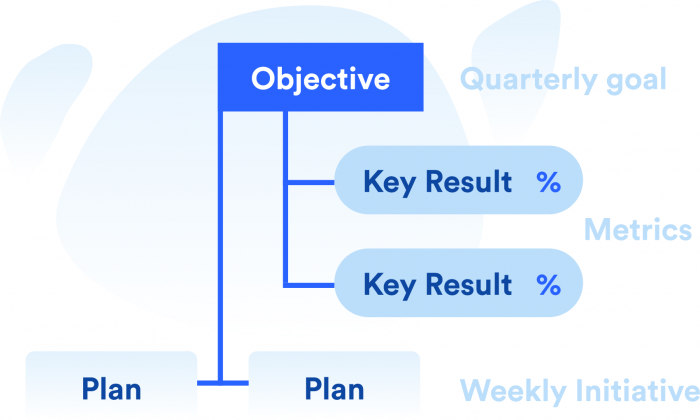It’s incredible when employees can come together from across an organization to solve a particular problem or complete a challenging project.
If you’re the manager of this type of team, though, you know that it’s not easy to lead people who come from various departments and have diverse training backgrounds.
Cross-functional team management is challenging. However, it’s essential if you want your employees and your company to see great results.
Read on to learn more about these kinds of teams, the benefits and challenges they present, and how to practice effective cross-functional team management.
What Is Cross-Functional Team Management?
A cross-functional team is composed of people with a wide range of skill sets. All of these individuals come together and use their expertise to complete a specific project.

With this information in mind, it’s easier to figure out a basic cross-functional team management definition.
Cross-functional team management refers to the specific practices a team leader uses to set goals, monitor progress, and make sure everyone is working together effectively to achieve a common goal.
Benefits of Cross-Functional Teams
Companies create cross-functional teams for many reasons, including the following:
- Increased innovation: When people with diverse backgrounds and experiences come together, it’s often easier for the team to come up with new, creative solutions;
- Less commitment to the status quo: Not only are cross-functional teams more innovative, but they’re also more committed to change — they’re less likely to do things a certain way just because “that’s how it’s always been done”;
- Increased efficiency: When they’re well-managed, cross-functional teams can harness each team member’s unique skills to complete projects faster;
- Less groupthink: If everyone comes from the same background, it’s easy for them to fall victim to groupthink and avoid questioning certain assumptions — bringing together people from various departments and backgrounds can combat this issue;
- Increased engagement and employee retention: Cross-functional teams can encourage engagement and help employees feel more connected to the entire organization instead of their specific department.
There’s power in diversity — including diversity of skill and training. Bringing people together from across the organization — developers, marketers, salespeople, etc. — can give your business a leg up on the competition.
Common Cross-Functional Team Management Challenges
When you bring together professionals from various departments to form a cross-functional team, there will be obstacles to overcome, including the following:
- Lack of trust: People who belong to different departments may not know each other well or trust each other since they’ve never collaborated previously;
- Fear of conflict: Because team members don’t know each other well, they may tiptoe around each other to avoid arguments — this interferes with innovation;
- Lack of commitment: Sometimes, members of cross-functional teams prioritize their specific department tasks over project-related tasks;
- Lack of accountability: Team members who don’t have strong relationships may be more inclined to be competitive with one another or pass blame when something goes wrong;
- Lack of attention to results: Without proper guidance, members of cross-functional teams may struggle to look at the big picture and focus too much on their individual tasks and assignments.
The good news is that with proper planning and management, team leaders can overcome these hurdles and set their cross-functional teams up for success.
How to Improve Project Management for a Cross-Functional Team
Effective cross-functional team management should include the following:
Clear Ground Rules
It’s easier to overcome issues like lack of accountability or lack of commitment when everyone knows what’s expected of them. During your first team meeting, clarify your expectations to the team. This includes expectations regarding contributions, tracking progress, meeting deadlines, and team communication.
Culture of Trust and Honesty
Speaking of communications, you should also strive to create a culture of trust and honesty among your team. If people do not feel safe speaking up, sharing ideas, or disagreeing with the group, you won’t see the kinds of results you’re hoping for.
Freedom to Fail or Make Mistakes
Your team members should know that you don’t expect perfection. Let them know it’s okay to make mistakes or mess up. This helps to encourage transparency and prevents fear of conflict.
Goal-Setting with OKRs
Proper goal-setting is a must for cross-functional teams. One of the best methodologies to use is the OKR framework.

OKR stands for Objectives and Key Results. Objectives are qualitative goals your team wants to achieve, and Key Results are quantitative, measurable, and tell you whether or not you’ve met a particular Objective.
Regular Meetings
As a cross-functional team leader, you need to check in with your team members regularly — ideally, weekly.
Weekly meetings help you keep track of their progress. They also create opportunities for them to share their results, discuss problems, and come up with solutions.
The Right Team Management Tool
It can be hard to stay in touch with team members in between meetings when people are spread throughout the office or working remotely. This is why a good team management software like Team Compass is so helpful.
Team Compass provides you with productivity tools to set and track goals, review weekly team reports, distribute pulse surveys, and set up 1:1s to connect with and guide your team.
Change the Way You Manage Cross-Functional Teams Today
Cross-functional teams present plenty of challenges, from a lack of trust to a lack of big-picture thinking. However, they also offer lots of benefits, including increased innovation and a reduced risk of falling victim to groupthink.
As a cross-functional team manager, you have your work cut out for you. If you follow the tips outlined above, though, you’ll have a much easier time leading your team and helping them achieve their goals.
Effective cross-functional team management includes clear ground rules, a culture of honesty, and giving people the freedom to fail or make mistakes. You must also set specific Objectives and identify the Key Results that will help you accomplish them, then conduct regular meetings to monitor progress, as well as to give and receive feedback.
The right tools can make cross-functional team management much easier. Team Compass helps you stay in touch with your team, set and track goals, and review weekly reports to enhance team meetings.